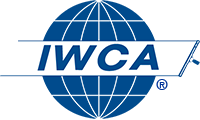January 25, 2019
Mr. Reg Ranahan
GSS Corporation
80 Hudson Road, Ste. 100
Canton, Massachusetts 02021
Dear Mr. Ranahan:
Thank you for your letter to the Occupational Safety and Health Administration (OSHA)[. Your letter has been referred to the Directorate of Enforcement Programs for an answer to your specific question] regarding 29 CFR 1910.27(b)(1)(i). [This letter constitutes OSHA’s interpretation only of the requirements herein, and may not be applicable to any question not delineated within your original correspondence.] Your letter requests clarification of the requirements for rope descent system anchorages under 29 CFR 1910.27(b)(1)(i). Your paraphrased question and OSHA’s response are below.
Question: International Window Cleaning Association/American National Standards Institute (IWCA/ANSI) I-14.1-2001 Section 8.1.3 requires that anchorages “be tested by applying a minimum static load of twice the design load in each (primary) direction that a load may be applied. For example, an anchorage with an ultimate capacity of 5000 pounds (2268 kg) has a four to one safety factor. Therefore the anchor’s design load is 1,250 pounds (567 kg) and it shall be tested at 2500 pounds (1134 kg).” Under 29 CFR 1910.27(b)(1)(i), must anchorages be tested at 5,000 pounds, or is it permissible to test them at 2,500 pounds, as described in IWCA/ANSI I-14.1-2001?
Response: 29 CFR 1910.27(b)(1)(i) requires that building owners inform employers, in writing, that the building owner has identified, tested, certified, and maintained each anchorage so that it is capable of supporting at least 5,000 pounds, in any direction, for each worker attached. Certification of each anchorage must be performed by a qualified person. Because the OSHA standard does not specify criteria for testing anchorages, the qualified person may utilize any scientifically-valid testing criteria to determine whether an anchorage is capable of supporting at least 5,000 pounds (2,268 kg) per attached worker. In general, this means using criteria that would be accepted by an industry consensus group, or that are certified by a registered professional engineer. OSHA would consider the testing criteria described in your letter – wherein an anchorage with a 5,000-pound ultimate capacity/strength and a four to one safety factor with a design load of 1,250 pounds is tested at 2,500 pounds – to be acceptable under 29 CFR 1910.27(b)(1)(i).
Thank you for your interest in occupational safety and health. We hope you find this information helpful. OSHA’s requirements are set by statute, standards, and regulations. Our letters of interpretation do not create new or additional requirements but rather explain these requirements and how they apply to particular circumstances. This letter constitutes OSHA’s interpretation of the requirements discussed. From time to time, letters are affected when the Agency updates a standard, a legal decision impacts a standard, or changes in technology affect the interpretation. To assure that you are using the correct information and guidance, please consult OSHA’s website at http://www.osha.gov. If you have further questions, please feel free to contact the Directorate of Enforcement Programs at (202) 693-2100.
Sincerely,
Patrick J. Kapust, Acting Director
Directorate of Enforcement Programs
https://www.osha.gov/laws-regs/standardinterpretations/2019-01-25


